Dahlias are vivacious, colorful flowers that can carry a striking beauty to any garden. Growing them from cuttings in pots is an easy, rewarding process that ensures you get healthy plants. Here’s a guide on how to grow dahlias from cuttings in pots at home.
Select Right Mother Plant of Dahlias
To start, you need a healthy mother plant from which to take cuttings. Look for a dahlia plant that is well-established and free from pests or diseases. Ideally, the plant should have strong, green stems with at least three to four leaves on them. Healthy mother plants produce the best cuttings, which lead to strong, energetic growth in new plants.
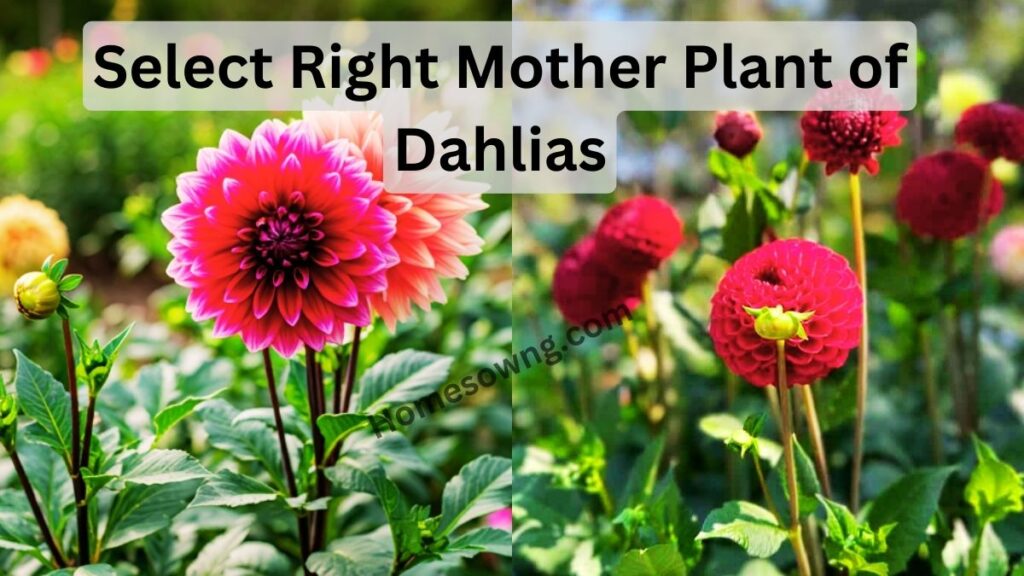
Take the Cuttings of Dahlias
Use clean, sharp scissors or a knife to cut 4-6 inch sections from non-flowering shoots of the dahlia plant. Make sure each cutting has at least two leaf nodes, as these are where roots will eventually form. Cut the stem just below a node and remove the lower leaves, leaving a few at the top. Proper cutting ensures that the new plant has the best chance to root and grow.
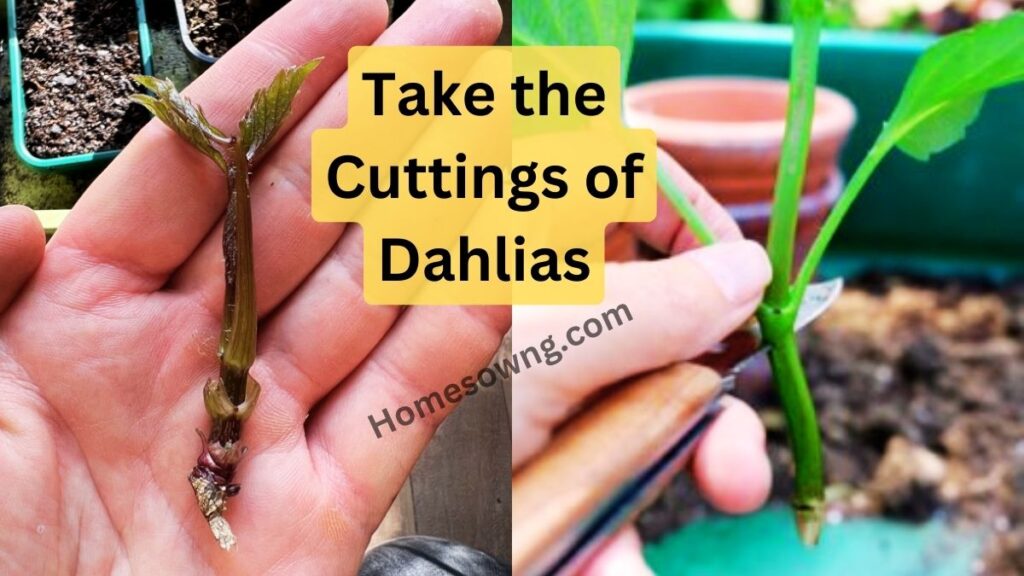
Preparation Pots for Dahlias
Choose a pot that has good drainage holes and fill it with a well-draining potting mix. A mixture of potting soil, sand, and perlite works well. The pot size should be at least 6 inches in diameter to allow room for root growth. Proper drainage prevents waterlogging, which can cause root rot and harm the young cuttings.
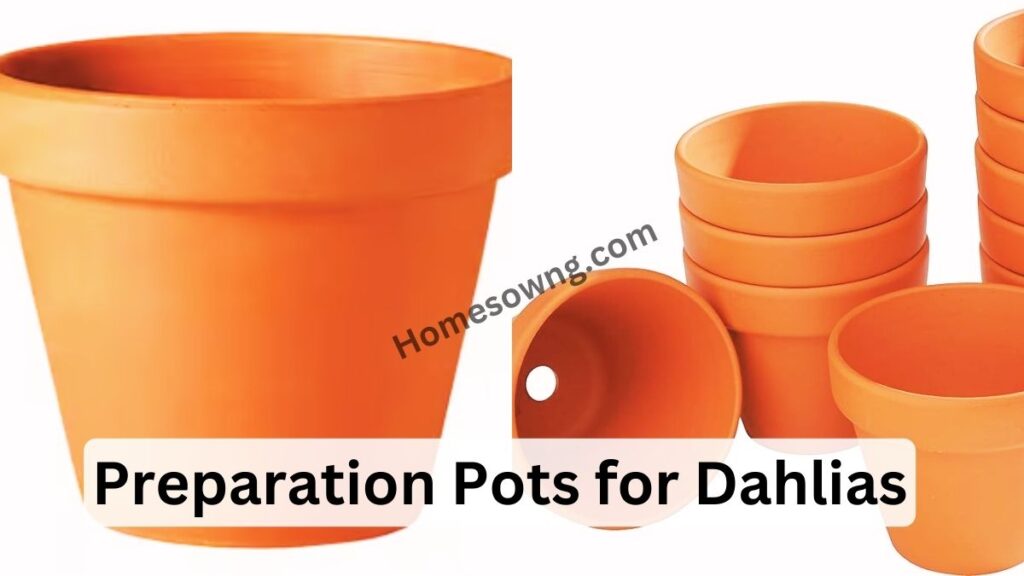
Planting the Cuttings of Dahlias
Dip the cut ends of the dahlia cuttings into rooting hormone, which helps stimulate faster root growth. Insert the cuttings into the potting mix, burying them about 2-3 inches deep. Firm the soil gently around the cuttings to ensure they are stable. Spacing the cuttings properly ensures that each one has enough space to develop roots without competition.
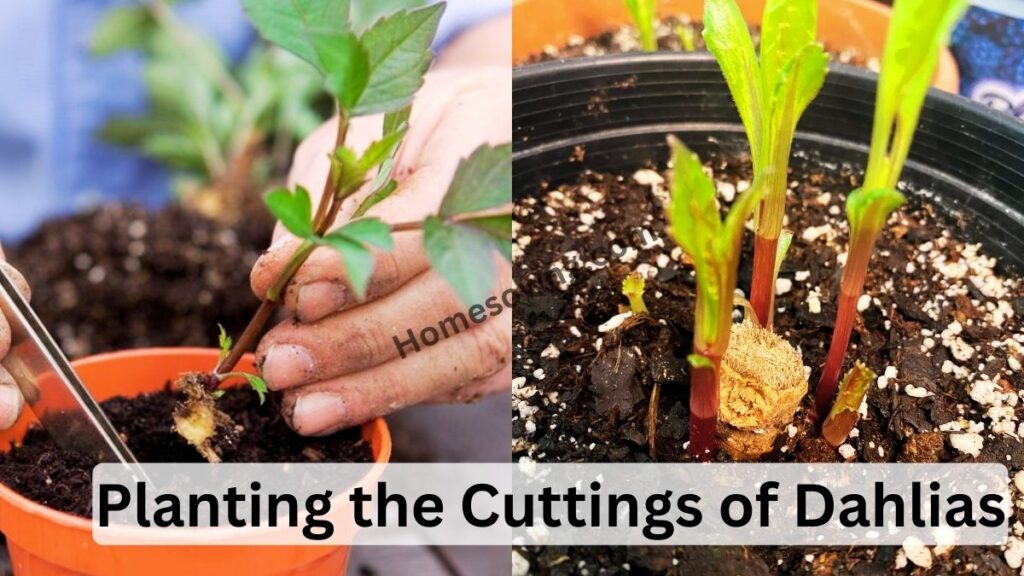
Providing Proper Care
Place the pot in a warm, bright location but out of direct sunlight to avoid scorching the tender cuttings. Keep the soil moist but not overly wet. A light misting with water can help maintain the humidity that cuttings need to establish roots. Consistent moisture and warmth are key factors in encouraging healthy root growth.
Monitoring Growth and Transplanting
After 2-4 weeks, check for root development by gently tugging on the cuttings. Once the roots are established, and new leaves start to appear, the cuttings are ready to be transplanted into larger pots or your garden. Be careful during this process, as the young roots are still delicate. Transplanting at the right time ensures the plant can continue growing vigorously.
Maintaining Humidity
Dahlias thrive in environments with high humidity, which helps young cuttings root faster. Cover the pot with a plastic bag or place it in a propagator to create a mini-greenhouse effect. Ensure there is ventilation to prevent mold growth. Maintaining an environment with stable humidity accelerates the rooting process and ensures a healthy start for your cuttings.
Fertilization of Dahlias
Once the cuttings show signs of growth and roots are established, start applying a balanced liquid fertilizer every two to three weeks. A low-nitrogen fertilizer (such as 10-10-10 or 5-10-10) works best for dahlias as it encourages flowering without excessive leaf growth. Over-fertilizing can harm the plants, so be cautious and follow instructions on the fertilizer package.
Pinching the Tips
Once the cuttings have started to grow, you can pinch off the top of the growing stem to encourage bushier growth. Pinching helps the plant focus energy on side shoots, resulting in more flowers and a fuller, compact plant. This step is particularly useful if you’re growing dahlias in pots, as it ensures a more manageable size while enhancing bloom production.
Pest and Disease Control
Dahlia cuttings, like mature plants, can be susceptible to pests such as aphids, spider mites, and slugs. Inspect the leaves regularly and use organic insecticidal soap or neem oil if you notice any signs of infestation. Disease like powdery mildew can also affect dahlias in humid conditions, so ensure good air circulation around the plants by not overcrowding them in the pot.

Supporting Your Plants
Once your dahlia cuttings grow larger and start producing flowers, they may need some support. Use stakes or small plant supports in the pot to keep the stems upright, especially for taller varieties. Tying the plants loosely to the support prevents them from bending or breaking under the weight of the blooms. This helps maintain the health and appearance of the plant as it matures.
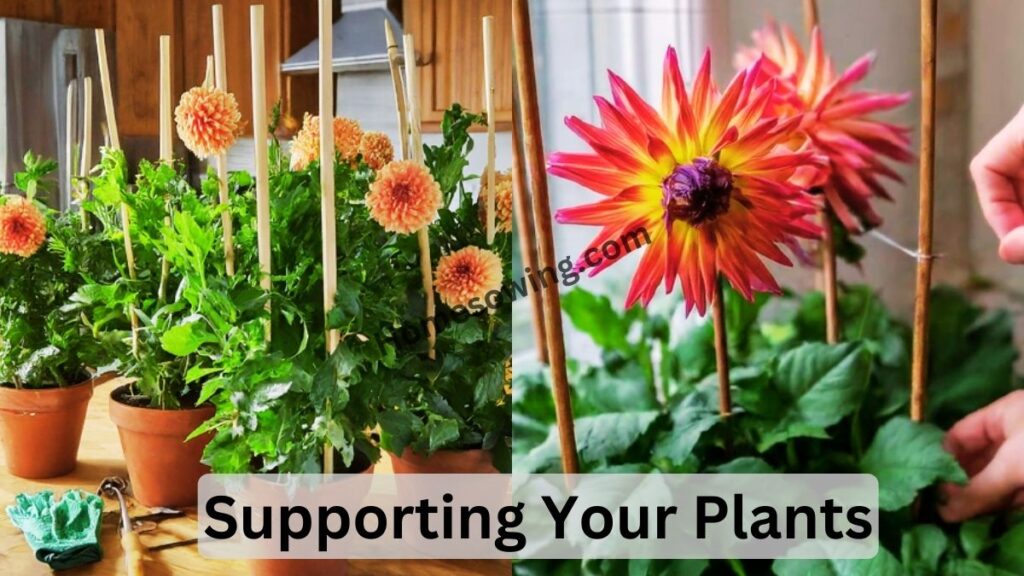
Overwintering Your Dahlias
Dahlias are not frost-tolerant, so if you live in a cooler climate, you’ll need to take steps to protect your plants. You can either bring the potted dahlias indoors during winter or, if they’re grown in the ground, dig up the tubers and store them in a cool, dry place until spring. Proper overwintering ensures that your dahlias will come back strong and healthy for the next growing season.










